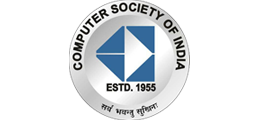Flyback Converter MATLAB Simulink procedures and design based on your project we will assist you with novel thesis ideas and topics. Achieve an impeccable journal manuscript with the help of matlabsimulation.com. If you’re struggling to choose the ideal topic, perform thorough research, or express your results clearly, our committed team is here to assist you every step of the way.The process of creating a flyback converter model is examined as challenging as well as intriguing. We summarize the procedures to develop a flyback converter model in MATLAB Simulink and offer few efficient project plans:
Procedures to Model a Flyback Converter in MATLAB Simulink
- Define the Circuit Components
- Input Voltage Source: In order to offer the input voltage, encompass a DC voltage source.
- Switch (Transistor): To regulate the on-off process of the converter, a MOSFET should be included.
- Transformer: For energy storage and segregation, transformers are employed. It is beneficial for designing the primary and secondary inductances.
- Diode: At the time of inactive state of the switch, diode contains the ability to permit current to flow in an effective manner.
- Output Capacitor: The output voltage is polished through this output capacitor.
- Load Resistor: Typically, the load linked to the converter output is exhibited.
- Open MATLAB Simulink and Create a New Model
- Initially, we plan to open MATLAB and intend to begin Simulink.
- A novel blank model must be developed.
- Add Components to the Model
- DC Voltage Source:
- Typically, the DC Voltage Source is identified in the Simulink library under Simscape > Electrical > Specialized Power Systems > Fundamental Blocks > Electrical Sources.
- When needed, we initialize the voltage value such as 24V.
- Switch (MOSFET):
- From Simscape > Electrical > Specialized Power Systems > Power Electronics > Switches > MOSFET, the Switch (MOSFET) is detected.
- The MOSFET metrics must be set.
- Transformer:
- It is advisable to employ two inductors and a mutual inductance block or focus on utilizing the in-built transformer model which is identified in Simscape > Electrical > Specialized Power Systems > Fundamental Blocks > Elements > Linear Transformer.
- Our team intends to initialize the primary and secondary inductance values.
- Diode:
- In Simscape > Electrical > Specialized Power Systems > Fundamental Blocks > Power Electronics > Diode, the diode is detected.
- Generally, the diode parameters should be arranged.
- Capacitor
- The Capacitor is identified in Simscape > Electrical > Specialized Power Systems > Fundamental Blocks > Elements > Capacitor.
- It is advisable to determine the capacitance value.
- Resistor:
- From Simscape > Electrical > Specialized Power Systems > Fundamental Blocks > Elements > Resistor, the Resistor is detected.
- In order to exhibit the load, we plan to initialize the resistance value.
- Connect the Components
- By means of the MOSFET, our team intends to link the DC voltage source to the primary winding of the transformer.
- The secondary winding of the transformer should be joined to the diode.
- We focus on linking the diode to the load resistor and output capacitor.
- For every element, it is appreciable to assure the accurate grounding and connections.
- Add Control Logic
- In order to regulate the MOSFET, it is beneficial to employ a Pulse Width Modulation (PWM) generator.
- It is identified in Simscape > Electrical > Specialized Power Systems > Control & Measurements > PWM.
- We plan to arrange the PWM metrics like duty cycle and frequency.
- Simulate the Model
- The simulation parameters like solver kind, start time, and stop time must be initialized.
- It is advisable to execute the simulation and focus on examining output current, voltage, and other metrics.
Instance: Simple Flyback Converter Model
% Create a new Simulink model
model = ‘flyback_converter’;
new_system(model);
open_system(model);
% Add DC voltage source
add_block(‘powerlib/Sources/DC Voltage Source’, [model, ‘/DC Voltage Source’], ‘Position’, [30, 30, 60, 50]);
% Add MOSFET
add_block(‘powerlib/Power Electronics/MOSFET’, [model, ‘/MOSFET’], ‘Position’, [150, 30, 180, 80]);
% Add transformer (using mutual inductance method)
add_block(‘powerlib/Elements/Inductor’, [model, ‘/Primary Inductor’], ‘Position’, [100, 150, 130, 200]);
add_block(‘powerlib/Elements/Inductor’, [model, ‘/Secondary Inductor’], ‘Position’, [250, 150, 280, 200]);
add_block(‘powerlib/Elements/Mutual Inductance’, [model, ‘/Mutual Inductance’], ‘Position’, [175, 150, 205, 200]);
% Add diode
add_block(‘powerlib/Power Electronics/Diode’, [model, ‘/Diode’], ‘Position’, [300, 30, 330, 80]);
% Add capacitor
add_block(‘powerlib/Elements/Capacitor’, [model, ‘/Capacitor’], ‘Position’, [400, 30, 430, 80]);
% Add resistor (load)
add_block(‘powerlib/Elements/Resistor’, [model, ‘/Resistor’], ‘Position’, [500, 30, 530, 80]);
% Connect components
add_line(model, ‘DC Voltage Source/1’, ‘MOSFET/1’);
add_line(model, ‘MOSFET/2’, ‘Primary Inductor/1’);
add_line(model, ‘Primary Inductor/2’, ‘Mutual Inductance/1’);
add_line(model, ‘Mutual Inductance/2’, ‘Secondary Inductor/1’);
add_line(model, ‘Secondary Inductor/2’, ‘Diode/1’);
add_line(model, ‘Diode/2’, ‘Capacitor/1’);
add_line(model, ‘Capacitor/2’, ‘Resistor/1’);
add_line(model, ‘Resistor/2’, ‘Ground’);
% Add control logic (PWM Generator)
add_block(‘powerlib/Control and Measurements/PWM’, [model, ‘/PWM’], ‘Position’, [30, 150, 60, 200]);
add_line(model, ‘PWM/1’, ‘MOSFET/3’);
% Configure blocks (set parameters)
set_param([model, ‘/DC Voltage Source’], ‘Amplitude’, ’24’);
set_param([model, ‘/Primary Inductor’], ‘Inductance’, ‘100e-6’);
set_param([model, ‘/Secondary Inductor’], ‘Inductance’, ’10e-6′);
set_param([model, ‘/Mutual Inductance’], ‘MutualInductance’, ‘sqrt(100e-6 * 10e-6)’);
set_param([model, ‘/Capacitor’], ‘Capacitance’, ‘470e-6’);
set_param([model, ‘/Resistor’], ‘Resistance’, ’10’);
% Set simulation parameters
set_param(model, ‘StopTime’, ‘0.01’, ‘Solver’, ‘ode45’);
% Run the simulation
sim(model);
Flyback Converter MATLAB Simulink Projects
- Efficiency Optimization of Flyback Converters
- In various load situations and input voltages, we plan to investigate and reinforce the effectiveness of flyback converters.
- Design and Simulation of Isolated Flyback Converters
- For power supply applications, our team intends to model and simulate an isolated flyback converter.
- Dynamic Response Analysis of Flyback Converters
- Generally, the dynamic response of flyback converters to variations in load and input voltage should be examined.
- Control Strategy Development for Flyback Converters
- For controlling the output voltage, we focus on constructing and applying various control policies like fuzzy logic control and PID control.
- Simulation of Flyback Converters with Active Clamp Circuits
- In order to enhance effectiveness and decrease voltage pressure, flyback converters with active clamp circuits have to be simulated and explored.
- Design of Flyback Converters for Renewable Energy Systems
- For utilization in renewable energy models, like solar power models, our team aims to model and simulate flyback converters.
- Comparison of Hard-Switching and Soft-Switching Flyback Converters
- The effectiveness of soft-switching and hard-switching flyback converters should be contrasted.
- Flyback Converter with Synchronous Rectification
- To enhance effectiveness, a flyback converter with synchronous rectification should be modelled and simulated.
- Multiphase Flyback Converters
- For high-power applications, we plan to model and simulate multiphase flyback converters.
- EMI Reduction Techniques in Flyback Converters
- In flyback converters, decrease electromagnetic interference (EMI) through exploring and applying suitable approaches.
- Simulation of Digital Control for Flyback Converters
- Mainly, for flyback converters, our team applies digital control approaches and focuses on investigating their effectiveness.
- Flyback Converter for Electric Vehicle Charging
- For utilization in electric vehicle charging stations, it is approachable to model and simulate a flyback converter.
- Flyback Converter with Power Factor Correction
- In flyback converters, we intend to apply power factor correction. Its influence on effectiveness must be assessed.
- Thermal Management in Flyback Converters
- It is advisable to investigate the thermal activity of flyback converters. Typically, thermal management approaches should be modelled.
- High-Frequency Flyback Converters
- For solid power supply applications, our team focuses on modeling and simulating high-frequency flyback converters.
Important 50 flyback converter Research Areas list
There exist numerous research areas based on flyback converters. We recommend 50 significant research regions that are relevant to flyback converters:
Design and Optimization
- Efficiency Optimization
- As a means to enhance the effectiveness of flyback converters, it is beneficial to apply efficient approaches.
- Transformer Design
- To decrease damages and enhance effectiveness, we plan to reinforce the model of the transformers.
- Switching Frequency
- On effectiveness and efficacy, our team aims to explore the influence of various switching frequencies.
- Component Selection
- For improving effectiveness, it is advisable to select the effective elements such as capacitors, MOSFETs, diodes.
- Soft Switching Techniques
- In order to enhance effectiveness and decrease switching damages, we aim to apply soft switching.
Control Strategies
- PID Control
- Specifically, for flyback converters, our team models and adjusts PID controllers.
- Digital Control
- For enhanced adaptability and accuracy, it is significant to apply digital control approaches.
- Fuzzy Logic Control
- Fuzzy logic control must be implemented for adaptive control of flyback converters.
- Sliding Mode Control
- For efficient effectiveness in differing situations, we focus on employing sliding mode control.
- Model Predictive Control
- To strengthen efficiency in a dynamic manner, it is beneficial to make use of model predictive control.
Topologies and Configurations
- Active Clamp Flyback Converters
- The limitations and advantages of active clamp arrangements should be investigated.
- Multiphase Flyback Converters
- For higher power applications, our team aims to model multiphase flyback converters.
- Interleaved Flyback Converters
- As a means to enhance effectiveness and decrease ripple, we plan to explore interleaved topologies.
- Isolated vs. Non-Isolated
- It is approachable to contrast the uses and effectiveness of non-isolated and isolated flyback converters.
- Bidirectional Flyback Converters
- For applications necessitating power flow in two directions, our team models bidirectional converters.
Applications
- Power Supply Design
- In modeling effective and credible power deliveries, it is advisable to employ flyback converters.
- Renewable Energy Systems
- Generally, flyback converters must be incorporated in wind and solar power models.
- Electric Vehicle Charging
- In EV charging stations, we plan to apply flyback converters.
- Telecommunications Power Supplies
- For telecom equipment power supplies, our team focuses on modeling converters.
- Consumer Electronics
- Mainly, for effective power management, we intend to implement flyback converters in customer electronic devices.
Advanced Control Techniques
- Neural Network Control
- For adaptive control of flyback converters, it is significant to employ neural networks.
- Genetic Algorithm Optimization
- In order to strengthen control parameters, our team aims to implement genetic algorithms.
- Adaptive Control Systems
- To adjust to varying load situations, we create control models.
- Hybrid Control Strategies
- For improved effectiveness, it is approachable to incorporate numerous control policies.
- Real-Time Control
- Actual time control must be applied for dynamic performance improvement.
Thermal Management
- Heat Dissipation Techniques
- For efficient heat dissolution, our team plans to construct innovative approaches.
- Thermal Modeling
- As a means to forecast and handle generation of heat, develop thermal systems.
- Cooling Solutions
- For high-power applications, we model advanced cooling approaches.
- Thermal Stress Analysis
- On elements, focus on exploring and reducing thermal stress.
- Thermal Efficiency Optimization
- By means of design and material choice, it is appreciable to enhance thermal effectiveness.
Electromagnetic Compatibility
- EMI Reduction Techniques
- As a means to improve electromagnetic intervention, we intend to apply efficient approaches.
- Shielding and Filtering
- Typically, efficient shielding and filtering approaches must be modelled.
- EMC Standards Compliance
- It is advisable to assure adherence to electromagnetic compatibility principles.
- Noise Reduction
- In flyback converters, our team aims to decrease noise generation.
- EMC Testing and Validation
- For demanding EMC assessment and verification, it is significant to create suitable techniques.
Reliability and Safety
- Failure Mode Analysis
- We focus on exploring and reducing possible failure modes.
- Lifetime Prediction
- The functional lifespan of flyback converters should be forecasted.
- Fault Tolerance
- To confront and retrieve from failures, we plan to model converters.
- Safety Standards Compliance
- It is appreciable to assure adherence to security rules and principles.
- Redundancy and Backup Systems
- For crucial applications, our team aims to apply redundancy and backup models.
Innovative Materials and Technologies
- Wide Bandgap Semiconductors
- Specifically, for enhanced effectiveness, it is beneficial to employ extensive bandgap semiconductors such as SiC and GaN.
- Magnetic Materials
- For transformer cores, we focus on investigating innovative magnetic materials.
- Advanced Capacitor Technologies
- The high-effectiveness capacitors should be employed for enhanced energy storage.
- Nano-Technology Integration
- For improved effectiveness and reduction, our team intends to incorporate nana-technology.
- Smart Materials
- It is advisable to utilize smart materials for receptive and adjustable converter models.
Simulation and Modeling
- High-Fidelity Simulation Models
- For precise simulation, we aim to construct high-fidelity systems.
- Hardware-in-the-Loop Simulation
- Generally, hardware-in-the-loop (HIL) simulation should be employed for actual time experimentation.
- Transient Response Analysis
- The transient response of converters has to be examined and reinforced.
- Multi-Domain Simulation
- Focus on synthesizing mechanical, electrical, and thermal simulations.
- Optimization Algorithms
- As a means to adjust converter models, our team plans to utilize innovative optimization methods.
Several significant steps should be followed while modeling a Flyback converter. Through this article, we suggested procedures to create a Flyback converter in MATLAB Simulink including a few project plans. Also, 50 major research areas which are relevant to flyback converters are offered by us in an extensive manner












